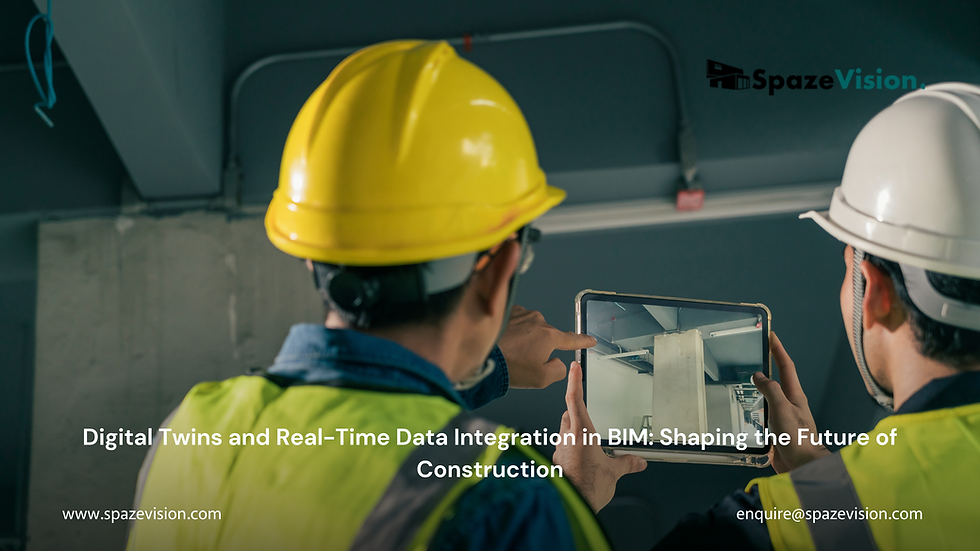Embracing the Future: Digital Twins and Real-Time Data Integration in BIM
In the ever-evolving landscape of construction and architecture, staying ahead of the curve requires a forward-thinking approach and a willingness to adopt innovative technologies. One such groundbreaking innovation is the integration of Digital Twins with Building Information Modeling (BIM). This fusion is not just a trend; it's a revolution that promises to redefine how we design, construct, and manage buildings. Let's dive into how Digital Twins and real-time data integration in BIM are shaping the future of construction with a uniquely positive outlook.

The Power of Digital Twins
A Digital Twin is a dynamic, digital replica of a physical object, system, or process. In the context of construction, it represents a building or infrastructure project. Unlike traditional 3D models, Digital Twins are continuously updated with real-time data, offering a living, breathing representation of the physical asset. This real-time connectivity enables unprecedented insights and control over the entire lifecycle of a building.
Transforming BIM with Real-Time Data
BIM has long been the gold standard in construction for creating detailed digital representations of buildings. However, the static nature of traditional BIM models has its limitations. This is where real-time data integration comes in, transforming BIM into a more powerful, responsive tool. By integrating IoT sensors, advanced analytics, and real-time data streams, BIM models can now reflect the current state of a building, providing valuable insights that were previously unattainable.
Unleashing the Potential of Real-Time Data Integration
1. Enhanced Decision-Making
With real-time data at their fingertips, project managers and stakeholders can make informed decisions faster than ever before. For instance, real-time monitoring of structural health can alert maintenance teams to potential issues before they become critical, saving time and resources.
2. Proactive Maintenance and Reduced Downtime
Digital Twins enable predictive maintenance by continuously monitoring the performance of building systems. This proactive approach reduces downtime and extends the lifespan of critical infrastructure components, leading to significant cost savings and enhanced operational efficiency.
3. Optimized Energy Efficiency
Real-time data integration allows for the continuous monitoring and optimization of energy consumption. By analyzing data from sensors, building management systems can adjust HVAC, lighting, and other systems to ensure maximum energy efficiency, reducing both costs and environmental impact.
4. Improved Occupant Experience
A building that adapts to the needs of its occupants in real-time offers a superior user experience. Digital Twins can analyze occupancy patterns and environmental conditions, adjusting building systems to enhance comfort and productivity. This user-centric approach not only improves satisfaction but also attracts tenants and increases property value.
A Bright Future Ahead
The fusion of Digital Twins and real-time data integration with BIM heralds a new era in construction and building management. This powerful combination not only enhances efficiency and sustainability but also opens up new possibilities for innovation and user-centric design. As more projects adopt these technologies, we can expect to see smarter, more responsive buildings that truly meet the needs of their users and the environment.
By embracing Digital Twins and real-time data integration in BIM, we are not just building structures; we are creating intelligent, adaptive environments that will shape the future of our cities and communities. The potential is immense, and the journey has only just begun.
Comments